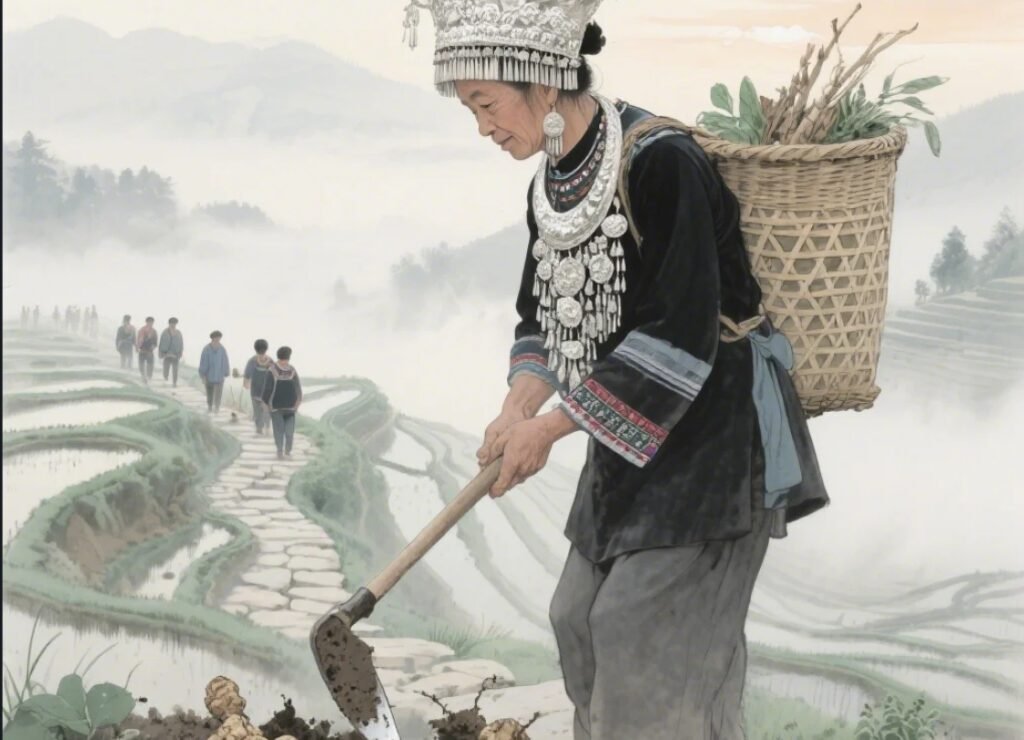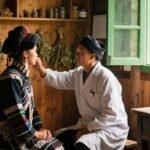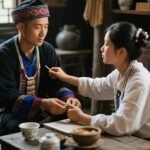Mangnabi Guayoka (Kidney Failure)
Overview
In Miao medicine, kidney failure is referred to as Mangnabi Guayoka. Conditions such as Puluopubi (edema) and Zhuabingqiangmeng (fatigue-induced injury) are also considered part of this syndrome group. Mangnabi Guayoka can stem from multiple causes, including invasion by wind pathogens, internal damage from improper diet, excessive exertion, loss of blood, body fluids, or vital qi, as well as congenital deficiency, qi and blood deficiency, or prolonged illness. The core pathogenesis lies in the dysfunction of qi, blood, and water metabolism.
Traditional Chinese Medicine (TCM) literature does not have a direct equivalent term or detailed discussion for kidney failure. Based on its clinical manifestations and disease progression, the compensatory and decompensatory stages—marked by edema and fatigue—are categorized under “edema”; while the end-stage and uremic phases, with symptoms such as oliguria, nocturia, nausea, vomiting, and fatigue, fall under “Guange” (obstruction), “Longbi” (urinary retention), and “Shenlao” (kidney exhaustion).
In Western medicine, kidney failure refers to a pathological state in which chronic kidney disease progresses to the point where kidney function is partially or completely lost. It primarily presents as irreversible damage to glomerular filtration and tubular concentration abilities, characterized by renal failure, uremic retention, and disturbances in water-electrolyte and acid-base balance. It is the terminal stage of various chronic kidney diseases.

Huho Jipeng · Miao Disease Classification
Mangnabi Guayoka is classified as a minor syndrome, further divided into two subtypes: heat-type and cold-type kidney failure.
Aijiangduo · Etiology
According to Miao medicine, causes include congenital deficiencies, overexertion, dietary irregularities, excessive sexual activity, and traumatic injuries. Such chronic strain results in exhaustion. The root of this disease lies in qi, blood, and water. Imbalance among these three and their prolonged failure to recover leads to dysfunction in vital energy circulation, fluid retention, and eventual debilitation.
Gengduomeng · Pathogenesis
External pathogens, dietary disorders, overwork, or chronic illnesses may impair organ nourishment and functional regulation. Prolonged dysfunction of the lungs, spleen, and kidneys disturbs water metabolism, leading to edema and oliguria. Congenital weakness, post-illness debility, or chronic diseases of other organs damaging the kidneys can cause kidney exhaustion and manifest as qi and blood deficiency.
Diagnostic Criteria
Diagnostic Basis
History of chronic disease or risk factors associated with kidney failure, commonly seen post-major illness or long-term disease.
Manifestation of chronic kidney disease symptoms: fatigue, dizziness, lower back soreness, poor appetite, nausea, vomiting, increased nocturia.
Exclusion of other internal disorders causing oliguria, nocturia, fatigue, nausea, or vomiting.
Auxiliary Examinations
Routine blood and urine tests, renal and hepatic function tests, electrolyte levels.
Imaging studies such as urogenital X-rays, urography, radionuclide renography, or renal scans may assist in determining the etiology.
Differential Diagnosis
Ouwa Ji Aluo (Urinary Difficulty)
Both conditions may involve urination difficulties. In Mangnabi Guayoka, oliguria is common during disease progression, resulting from renal failure and marked by reduced daily urine output. Ouwa Ji Aluo refers to difficulty in urination from various causes, primarily characterized by obstructed urination without abnormal urine volume. Both may progress to anuria.
Classification and Treatment
Heat-Type Kidney Failure
Clinical Manifestations: Edema starting from the face and eyelids, spreading to limbs and entire body, accompanied by fever, chills, pain, severe swelling in the lower limbs, and reduced urination.
Channel Attribution: Heat channel, heat disease.
Treatment Principle: Xugakaiwa Ouwan (Clear heat and promote urination)
Prescription:
Yanggaji (Rhizoma Imperatae, bai mao gen) 20g
Wogali (Herba Rotalae, zao lian cao) 10g
Wojiaqiangque (Herba Polygoni Avicularis, bian xu) 15g
Wolibajiang (Herba Plantaginis, che qian cao) 10g
Womishayou (Herba Lobeliae Chinensis, ban bian lian) 10g
Decoction for oral administration.
All herbs clear heat and promote urination, reduce swelling, and detoxify heat pathogens.
Cold-Type Kidney Failure
Clinical Manifestations: Cold limbs, edema, pale or sallow complexion, fatigue, poor appetite, increased nocturia, clear and long urine, loose stools.
Channel Attribution: Cold channel, cold disease.
Treatment Principle: Hanwushanbudiu (Nourish liver and tonify kidney), Buyixiang (Tonify qi and nourish blood)
Prescription:
Jiaexi (Epimedium brevicornum, yin yang huo) 15g
Zhenbuyang (Rosa laevigata fruit, jin ying zi) 10g
Zhendoubuo (Lycium barbarum fruit, gou qi zi) 20g
Youjialiu (Cibotium barometz, gou ji) 20g
Woqiangniu (Dipsacus asper, xu duan) 15g
Decoction for oral administration.
The combination warms and tonifies liver and kidney, strengthens bones, expels wind-damp, and supports qi and blood.
Preventive Care
Strict dietary control is essential as impaired kidney function prevents effective toxin and waste elimination, and improper diet may aggravate the condition.
A high-quality protein, low-salt diet is recommended; fluid intake should be limited. Avoid alcohol, coffee, and spicy foods.
Balance work and rest, regulate emotions, maintain regular daily routines, avoid excessive fatigue and sexual activity.
Remarks
Miao medicine posits that qi, blood, and water are the essential substances of the human body. These elements are interdependent and mutually influence each other. There is a saying: “Qi and blood depend on each other; qi propels blood, and blood carries qi. Water generates blood, and blood carries water. Without water, blood cannot be formed; without blood, water cannot nourish the body.” Mangnabi Guayoka arises from various causes damaging blood, fluids, and qi, resulting in their imbalance, impaired qi movement, fluid retention, and eventual debilitation. Therefore, (used in traditional contexts) should focus on replenishing qi and blood, nourishing the organs. When qi and blood are sufficient, pathogenic factors will naturally be eliminated.



Leave a Reply